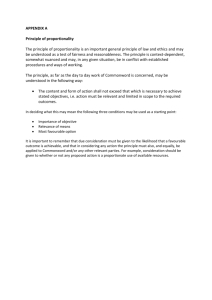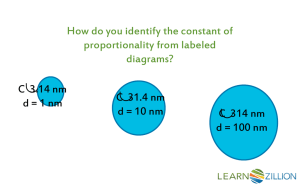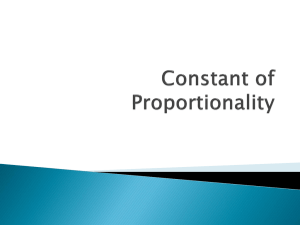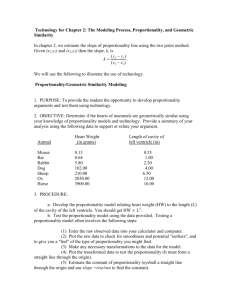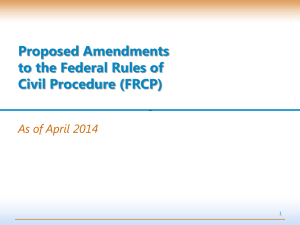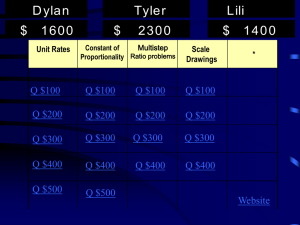Proportionality principle in EU legislation An introduction to
advertisement
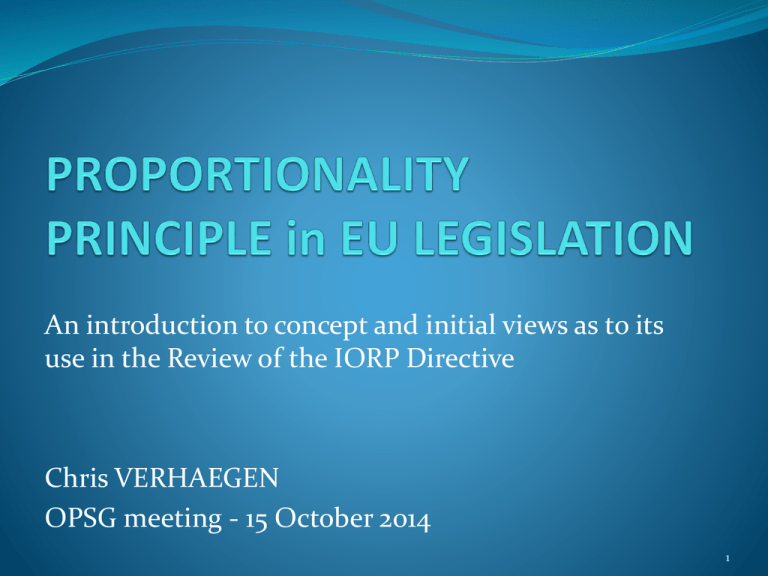
An introduction to concept and initial views as to its use in the Review of the IORP Directive Chris VERHAEGEN OPSG meeting - 15 October 2014 1 Proportionality - core principle in EU law Treaty on European Union (TEU) Art. 5.1 and 5.4. Definition : “Under the principle of proportionality, the content and form of Union action shall not exceed what is necessary to achieve the objectives of the Treaties”. Protocol n° 2 on the application of the principles of subsidiarity and proportionality to the TEU and the TFEU requires “constant respect” for the principle of proportionality before proposing legislative acts, EU COM shall “consult widely” while taking into account the regional and local dimension of the action envisaged 2 EU Law - Lamfalussy to Lisbon Level 1 - Framework Directive Level 2 - Delegated Acts: Regulation (Commission) Level 3 - RTS and ITS developed by EIOPA and endorsed by EU COM Level 4 - Guidelines and Recommendations developed by EIOPA 3 Applying proportionality The principle applies to all levels of EU Legislation and quasi-legislation: Across the Directive, not only to those articles with explicit or implicit reference to proportionality. Delegated Acts from Commission Technical Standards, Guidelines and Recommendations from EIOPA and EU COM Implementing legislation at Member State level Exercising supervisory powers both EU level (EIOPA) and national one (Competent Authorities) 4 Objectives of Proportionality Ensure that EU legislation and quasi-legislation: is not too burdensome i.e. it takes account of the nature, scale and complexity of the business takes account of the particular nature of specific institutions/industries, e.g. corporate IORPs, DC schemes, DB schemes 5 Proportionality applied to IORP II (1) Small institutions (art. 5) Option for MS as to application of Directive to entities with less than 100 members essential keeping this rule since there are around 125.000 IORPs in the EU, the majority of which is small Effective governance (art. 22.2 & 22.5) IORPs are required to have in place an effective system of governance that is proportionate to the nature, scale and complexity of the activities of the IORPso “as to ensure that the governance requirements will not be too burdensome for example for small institutions” Size = a critical criterion 6 Proportionality applied to IORP II (2) Remuneration policy (art. 24.1, 23.4a & rec.37) takes account of size , nature, scope and complexity for persons who effectively run the institution key functions or any other activities, including outsourced and subsequently re-outsourced key functions Risk management (art. 26) Effective risk-management system and a risk management function that is “appropriate to their size” or preferably “proportionate to their size” Risk evaluation of pensions (art.29) Proportionate to the size, internal organisation and the nature, scope and complexity of the IORPs’ activities 7 Proportionality applied to IORP II (3) Depositary (art. 35) Only for IORPs operating schemes where members and beneficiaries bear all the risks => application of the principle by COM General principles of prudential supervision (art. 63) “Supervisory powers shall be applied in a timely and proportionate manner. Additional points of attention: Two heads for effective management Propriety requirements Pensions benefit statement (PBS) 8 Proportionality and IORP II - Conclusions The over-arching principle of proportionality offers opportunities to make upcoming legislation and quasilegislation adapted to specificities of institutions as to size, nature, scope and complexity. The concept is vague yet potentially powerful especially given new COM agenda: “Respect for the principles of subsidiarity, proportionality and better regulation will be at the core of the work of the new Commission. We will concentrate our efforts on those areas where only joint action at European level can deliver the desired results. When we act, we will always look for the most efficient and least burdensome approach. (C. J. Junker mission letters) 9 10
